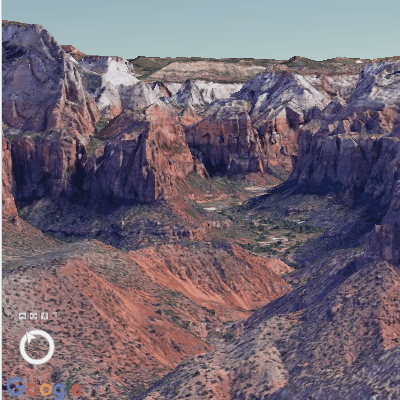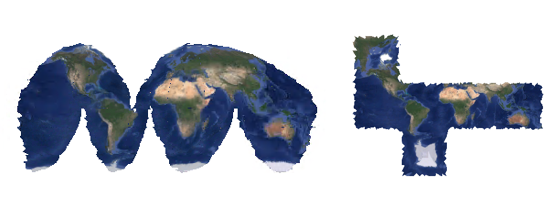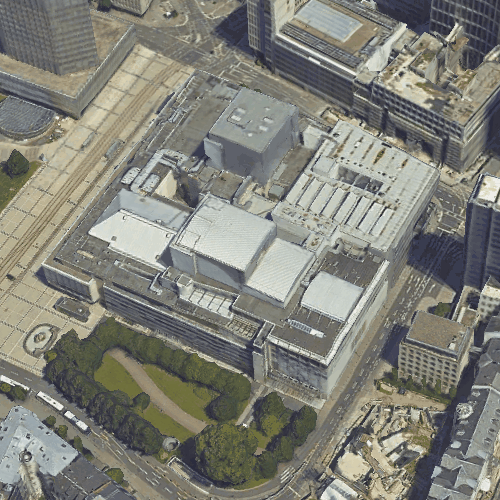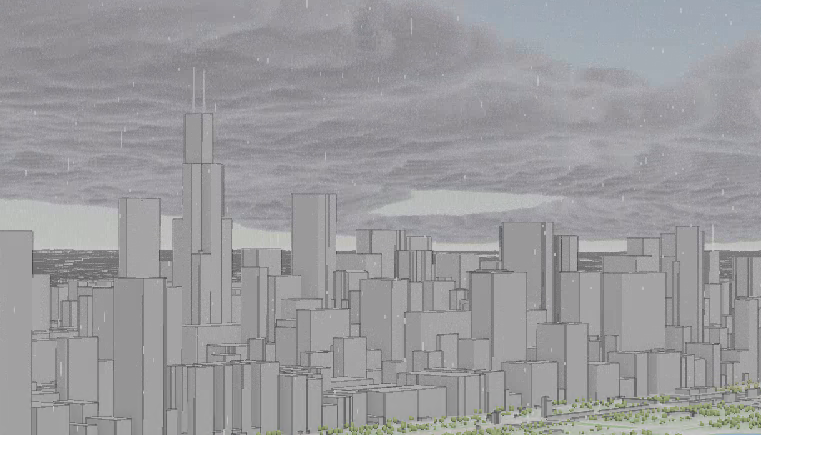Google Photorealistic 3D Tiles
We are thrilled to announce support for Google’s global Photorealistic 3D tiles mesh dataset! This 3D Tiles dataset can be seamlessly integrated into any local or global scene. Whether you are exploring Zion National Park, Rio De Janeiro, or Tokyo, this authoritative global mesh dataset is the perfect compliment to your 2D or 3D layers.

Unlock the full potential of ArcGIS Pro by visualizing this dataset with your preferred coordinate system. Since the data is in WGS84/WGS84, you can effortlessly utilize projection on the fly , thanks to our extensive support for various coordinate systems and transformations. Whether you are working with Web Mercator, to CUBE (World), or Goode Homolosine (LAND), the world is truly at your fingertips.

To use this layer, you’ll need an API key from Google, and it’s usage is governed by Google’s API policies. Once you have your key, simply add a custom parameter in the Add Data from Path dialog, and you’re ready to visualize mesh content anywhere on the globe.
For optimal visualization, it’s best to use this dataset without the Ground elevation surface or other basemap layers. As with other integrated meshes, it supersedes the ground elevation surface, allowing any 2D layers to be draped over it. Take advantage of exploratory 3D analysis tools like line of sight or viewshed, and make temporary modifications by clipping or replacing parts of the mesh.
Later this year, Esri will be releasing a 3D basemap that integrates Google Photorealistic 3D Tiles. Learn more at go.esri.com/3Dtiles.

3D Tile KHR_Texture_Basisu
The KHR_Texture_Basisu extension is now supported for 3D Tiles layers. Leverage this extension to visualize textures with KTX version 2 with BASIS universal super compression. Take advantage of efficient asset transmission, reduced GPU memory, and better platform interoperability. This functionality adds to the list of already supported textures JPEG and PNG.
3D Tiles layer modification
You can now add modifications when visualizing an integrated mesh 3D tiles layer. This functionality is consistent with previous features added to scene layers, allowing you to cut, mask, or flatten parts of the integrated mesh. Please note that these modifications are temporary and only exist within the ArcGIS Pro scene. They cannot be shared as a web scene to ArcGIS Enterprise or ArcGIS Online.

We continue to add user requested functionality at each release. Looking for something that we do not support yet? Head on over to Esri Community and submit an ArcGIS Idea to let us know!

These approach might be working for the recovery scenario.
But what is the official way to duplicate an environment side by side? A common scenario is to “downgrade” a production system to a testsystem to later approve the update procedure or to simulate other updates e.g. of third party tools.
What’s your recommendation?
This would be an approach you can take to set up a duplicate environment. By creating the environment where etc\hosts entries are in place, you’re isolating the traffic to the standby environment to machines that have the entries. Read-only mode discussed in the blog is a way that you don’t need to downgrade the production environment. Set up your new environment, put the production environment to read-only so no updates can be performed, then you can test your patches/updates/upgrades on the new environment without impacting production or dealing with data differences.
It looks like this method is not possible when migrating to a machine in Microsoft Azure using ArcGIS Enterprise Cloud Builder 10.8. This is because AE Cloud Builder does not provide an option to update the etc\hosts file between creating the machine and installing the software. The AE Cloud Builder does the creation of the Azure server machine and installing of ArcGIS Enterprise, in one step, without a configuration to edit the etc\hosts file.
Let me know if there’s a step I could be missing.
Right, standing up a duplicate environment is challenging when you don’t have the ability to modify the etc\hosts files in between when the machines are provisioned and the software installed and configured. In this case, you’ll need to either update the public DNS entry to resolve to the standby while it’s getting configured, or investigate whether the standby can be in a separate subnet that resolves the public DNS differently, (doesn’t resolve to the production environment), so the standby can be created. We’re updating the blog to indicate other ways to achieve hostname resolution outside of the etc\hosts file.
Can this approach be used if I am moving my enterprise to a newer windows server operating system? Also, can I use this approach if I want to use and newer version of enterprise?
Did Lisa’s question get an answer? I’m moving to a new OS and want to upgrade the Enterprise Server software version as well. Or do I need to upgrade Enterprise Server on the existing machine BEFORE I try movingto the new machine?
I had the same question, and according to support, the following strategy is recommended:
I still seek this information.
I’m trying to restore a webgisdr backup (11.1) to a new CloudBuilder deployment (11.1), then switch my DNS/AWS load balancer, etc to point to the new environment. Having trouble with the hosts file entry. I’m not exactly sure what to use there. Do you have any more specific examples you could give?